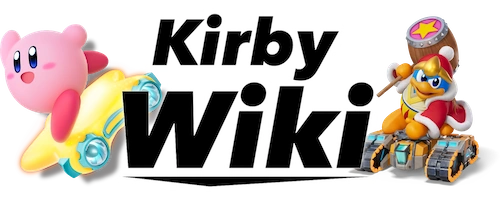| This article is about the series starring Kirby. For other uses, see Kirby (disambiguation). |

A variant of the Kirby series logo
The Kirby series is an ongoing franchise of video games starring the eponymous character, Kirby, and created by Masahiro Sakurai and developed by the HAL Laboratory. It is one of Nintendo's most popular and best-selling franchises, selling over 30 million units since its debut[1]. The series is known for its bright and artistic setting, cute characters, cheerful and upbeat music, and the ability to inhale, swallow, and copy the abilities of enemies.
Overview
All the titles in the Kirby series feature a pink, spherical creature named Kirby as the main playable character, hero, and protagonist. The most recurring antagonist of the series is King Dedede, the greedy, hammer-wielding, self-proclaimed ruler of Dream Land; he has appeared in every Kirby game except Kirby & The Amazing Mirror. Meta Knight is another major recurring character. He appears to be the same species as Kirby, and he is a chivalrous, but enigmatic warrior who assists the hero on many occasions. Depending on the situation, he sometimes fights Kirby to get the things he desires, or to prevent him from causing a much larger problem. He respects a certain code of honor, and always offers Kirby a sword when fighting with him.
The games' fictional setting, Planet Popstar, includes many regions of different climates and terrain, which are home to many different creatures. The areas in each game have unique names, but they fall into categories such as fiery caverns, open meadows, water-filled or submerged areas, icy mountains, and similar nature-based places.
Gameplay
The Kirby series usually involves the player controlling the pink puffball, Kirby, as he saves Dream Land, Popstar, or other planets from threats.
Kirby can walk, run, and jump, but also perform unique moves, like a slide attack and even infalte himself like a balloon by sucking up air to fly. In every game except Kirby 64: The Crystal Shards, Kirby can float indefinitely. Kirby can shoot out a puff of air to attack his enemies after flying. Kirby Super Star introduced guarding, while Kirby: Triple Deluxe introduced a dodge.
In the first game of the series, Kirby's Dream Land, Kirby's main form of attack is inhaling objects or his enemies whole, and spitting them at each other. The first game also featured power ups like Superspicy Curry and the Mint Leaf, that allowed Kirby to spit fire and air respectively for a limited time to attack his foes. The second game, Kirby's Adventure, and almost every main game after that, gives Kirby the ability to inhale and swallow his foes to obtain their abilities; for example, swallowing an enemy that is using a sword gives him the Sword ability, and swallowing a flaming enemy gives him the Fire ability. He can use one of these Copy Abilities at a time to give his enemies a taste of their own medicine, and players can try out more than twenty Copy Abilites in most games, sometimes even combining them. Games like Kirby's Return to Dream Land and Kirby: Triple Deluxe give Kirby amplified abilities; in the former, he can swallow certain foes to wield huge hammers or swords, and in the latter, he can eat a special bean to greatly increase his inhale ability — in this state, Kirby can inhale entire trees and trains.
Most Kirby games involve the player moving Kirby to the right of the screen through several levels and worlds that usually follow a theme, like grass, or desert, or lava. Many enemies populate the worlds, some of which are native to one particular world, like fire enemies to lava worlds, or flying enemies to cloud worlds. Some enemies stop Kirby in his tracks, preventing him from progressing until they are defeated. These mid-bosses are usually located near the middle of the level and tend to be larger than normal enemies. They take many more hits and have many more attacks than normal enemies, but can still be swallowed after their defeat, which awards a Copy Ability. The ability that the mid-boss gives is usually necessary to solve an upcoming puzzle that will award some kind of collectible. Bosses are typically giant enemies that seem to govern the entire area. Most bosses can summon smaller enemies to fight for them, and they take even more hits and have even more attacks that mid-bosses. They cannot be inhaled, but they do open the path to the next world after their defeat. Games like Kirby's Dream Land 2 and Kirby Super Star allowed Kirby to summon or partner up with allies that would fight alongside him. Other games, like Kirby & The Amazing Mirror, allow Kirby to travel alongside more of his kind.
Kirby has a set amount of health in the series' games, and food can be found in random areas that will restore his health after he touches an enemies or is hit by an attack. Losing all health results in Kirby losing a life, but 1UPs can also be found in levels. Other hazards, like pits or being crushed, instantly KO Kirby. Invincibility Candy can be found, which stays true to its name and prevents Kirby from taking any damage for a short time. Touching enemies hurts them instead, but instant-death hazards are still effective. Items like Keys and Crackers allow Kirby to pass hazards or attacks enemies without an ability. Levels usually take place in may rooms, and going through Doors allows Kirby to progress. Some doors cannot be reentered after Kirby goes through them the first time. The Warp Star is a large star-shaped item that Kirby can ride to get to far away areas very quickly. In main Kirby games, it steers itself, and damages any enemies and breaks through any obstructions in its way. Other things, like trolleys and cannons, are also a means of transport for Kirby.
List of Kirby games
Text-only reference list
Main series
| Title | Platform | Release Date (US) | Box Art |
|---|---|---|---|
| Genre: Platformers | |||
Kirby's Dream Land |
Game Boy | 1 Aug 1992 | 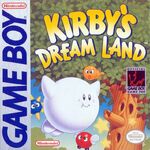
|
Kirby's Adventure |
NES / Famicom | 1 May 1993 | 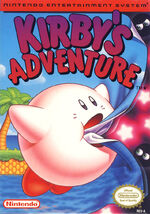
|
Kirby's Dream Land 2 |
Super Game Boy | 1 May 1995 | 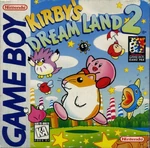
|
Kirby Super Star8 Games in 1 package. Spring Breeze is a short rehash of Kirby's Dream Land. |
SNES / Super Famicom |
20 Sept 1996 |
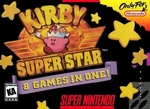
|
Kirby's Dream Land 3 |
SNES / Super Famicom | 27 Nov 1997 | 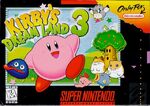
|
Kirby 64: The Crystal Shards |
Nintendo 64 | 26 Jun 2000 | 
|
Kirby & The Amazing Mirror |
Game Boy Advance | 18 Oct 2004 | 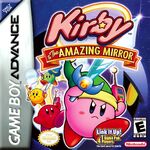
|
Kirby: Canvas Curse
|
Nintendo DS | 13 Jun 2005 | 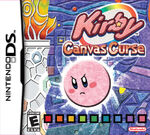
|
Kirby: Squeak Squad
|
Nintendo DS | 4 Dec 2006 | 
|
Kirby's Epic Yarn |
Wii | 17 Oct 2010 | 
|
Kirby Mass Attack |
Nintendo DS | 19th Sep 2011 | 
|
Kirby's Return to Dream Land |
Wii | 24 Oct 2011 | 
|
Kirby: Triple Deluxe |
Nintendo 3DS | 2 May 2014 | 
|
Kirby and the Rainbow Curse |
Wii U | TBA 2015 | |
Compilations / Spin-offs
| Title | Platform | Release Date | Box Art |
|---|---|---|---|
Kirby's Pinball Land |
Game Boy | November 1993 | 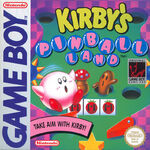
|
Kirby's Dream CourseFirst appearance of Keeby. |
SNES / Super Famicom | February 1995 | 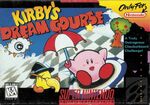
|
Kirby's AvalancheNot developed or released in Japan. |
SNES |
25 Apr 1995 | 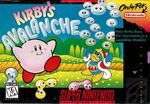
|
Kirby's Block Ball |
Game Boy | May 1996 | 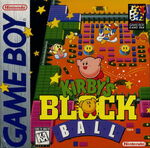
|
Kirby's Toy BoxOnly released in Japan. Known as Kirby no Omocha Hako locally. |
Broadcast Satellaview | 1996 | 
|
Kirby's Star Stacker |
Game Boy | April 1997 | 
|
Kirby Tilt 'n' Tumble |
Game Boy Color | 9 Apr 2001 | 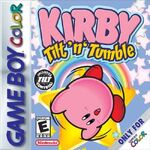
|
Kirby Slide |
E-reader (Game Boy Advance) | Nov-Dec 2003 | 
|
Kirby Air Ride |
Nintendo GameCube | 13 Oct 2003 | 
|
Kirby's Dream Collection: Special Edition |
Wii | 16 Sep 2012 | 
|
Remakes
| Title | Platform | Release Date | Box Art |
|---|---|---|---|
Kirby's Super Star StackerRemake of Kirby's Star Stacker. Only released in Japan |
Super Famicom | 30 November 1997 | 
|
Kirby: Nightmare in Dream LandRemake of Kirby's Adventure. |
Game Boy Advance | 2 Dec 2002 | 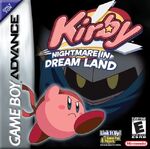
|
Kirby Super Star UltraEnhanced remake of Kirby Super Star. |
Nintendo DS | 22 Sep 2008 | 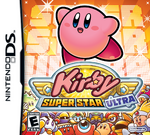
|
Unreleased titles
| Title | Platform |
|---|---|
Kid Kirby |
SNES / Super Famicom |
Kirby Air Ride (Nintendo 64) |
Nintendo 64 |
Kirby Family[2] |
Game Boy Color |
Kirby Tilt 'n' Tumble 2 |
Nintendo GameCube |
Kirby GCN |
Nintendo GameCube |
List of Super Smash Bros. Games
Kirby characters also appear in Nintendo's fighting game series Super Smash Bros.
| Title | Platform | Release Date | Box Art |
|---|---|---|---|
Super Smash Bros. |
Nintendo 64 | 26 Apr 1999 | 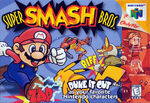
|
Super Smash Bros. Melee |
Nintendo GameCube | 3 Dec 2001 | 
|
Super Smash Bros. Brawl |
Wii | 9 Mar 2008 | 
|
Super Smash Bros. for Nintendo 3DS |
Nintendo 3DS | 3 Oct 2014 | 
|
Super Smash Bros. for Wii U |
Wii U | 21 Nov 2014 | 
|
Other Titles
These are not necessarily games, but are directly related to Kirby nonetheless.
Soundtracks
- Kirby: Triple Deluxe OST - Sound track for Kirby: Triple Deluxe. See Kirby: Triple Deluxe/Music
- Kirby's Return to Dream Land OST - Sound track for Kirby's Return to Dream Land. See Kirby's Return to Dream Land/Music
- Kirby & The Amazing Mirror Sound Plus - Sound Track for Kirby & The Amazing Mirror
- Kirby's Airride Business Trip Sound Test - Sound track for Kirby Air Ride
- Kirby Super Ultra Deluxe OST - Sound track for Kirby Super Star Ultra. See Kirby Super Star Ultra/Music
- Kirby 64: The Crystal Shards OST - Sound track for Kirby 64: The Crystal Shards. See Kirby 64: The Crystal Shards/Music
Narrations
- Mario Kirby Masterpiece
- Kirby and the Story of the Dream Spring
Manga
- Kirby of the Stars[3]
- Kirby of the Stars: The Story of Dedede Who Lives in Pupupu
- Kirby of the Stars!: Mo~Retsu Pupupu Hour![4]
Trivia

A photograph of the PAX Prime event.
- On September 1st, 2012, Nintendo hosted an event at PAX Prime in Seattle, Washington. To celebrate Kirby's 20th anniversary, the company wanted to break the Guinness World Record for the most people in a room blowing a chewing gum bubble simultaneously. Altogether, 536 fans showed up to participate, setting the new record.[5]
External links
- List of Kirby media on Wikipedia. It is an incomplete list, but all of the facts are fully-cited.
